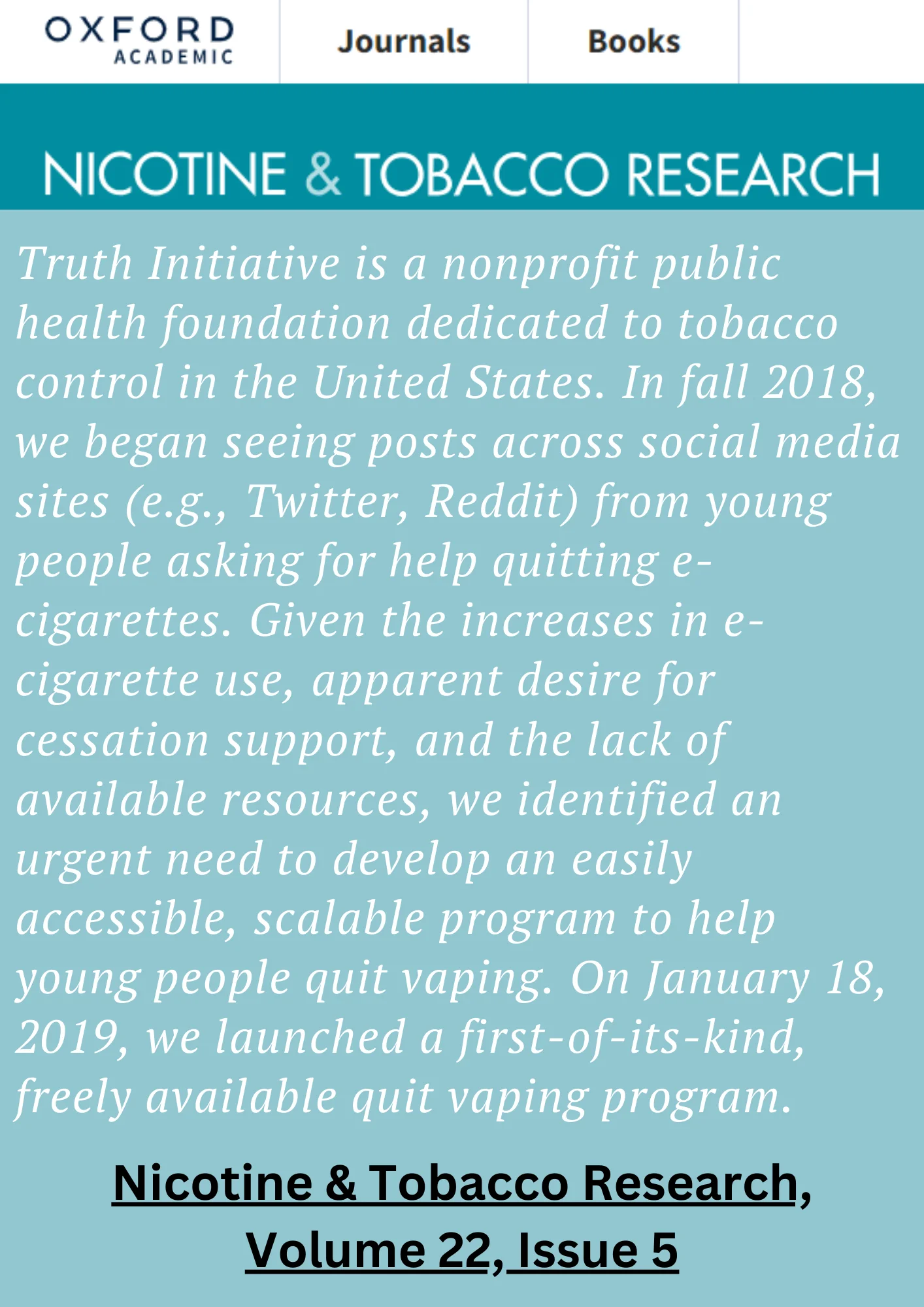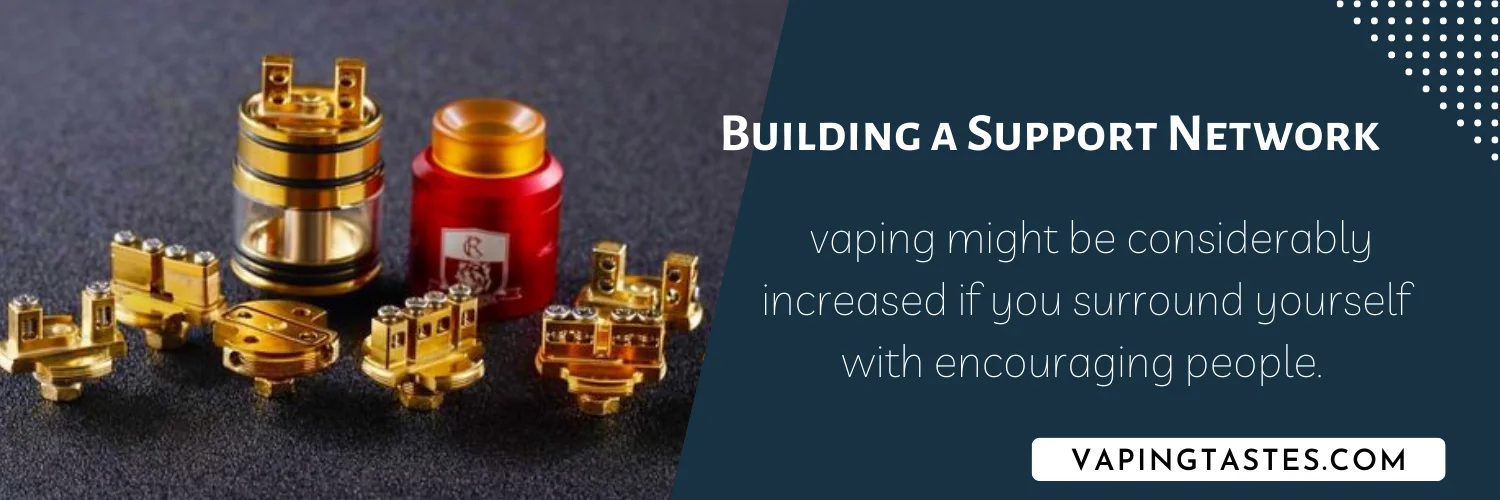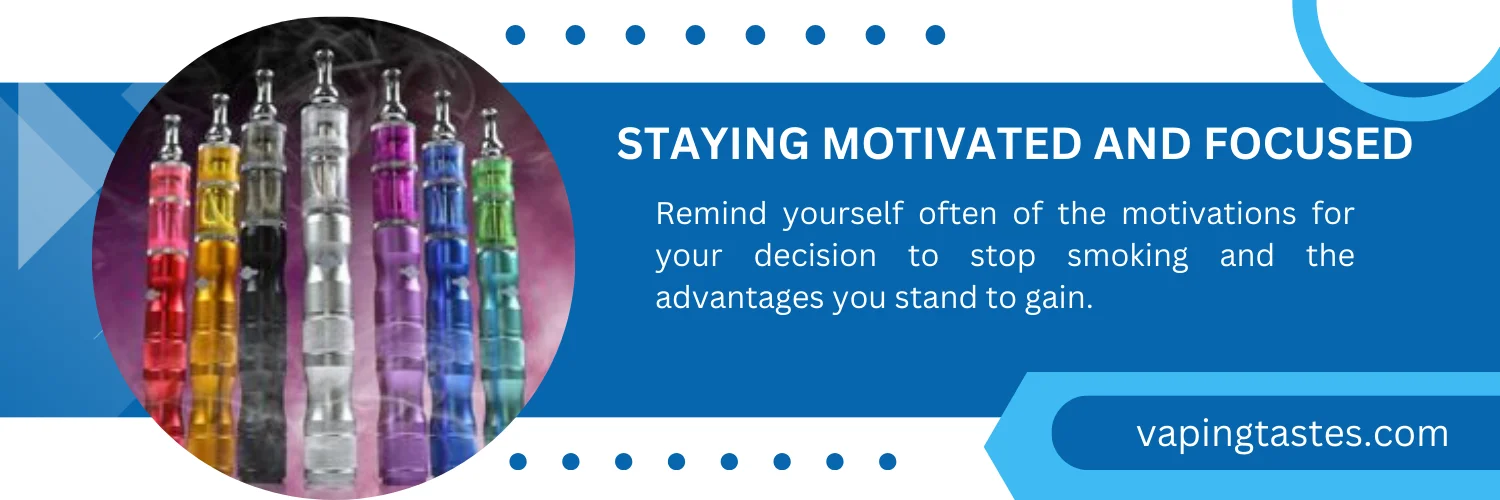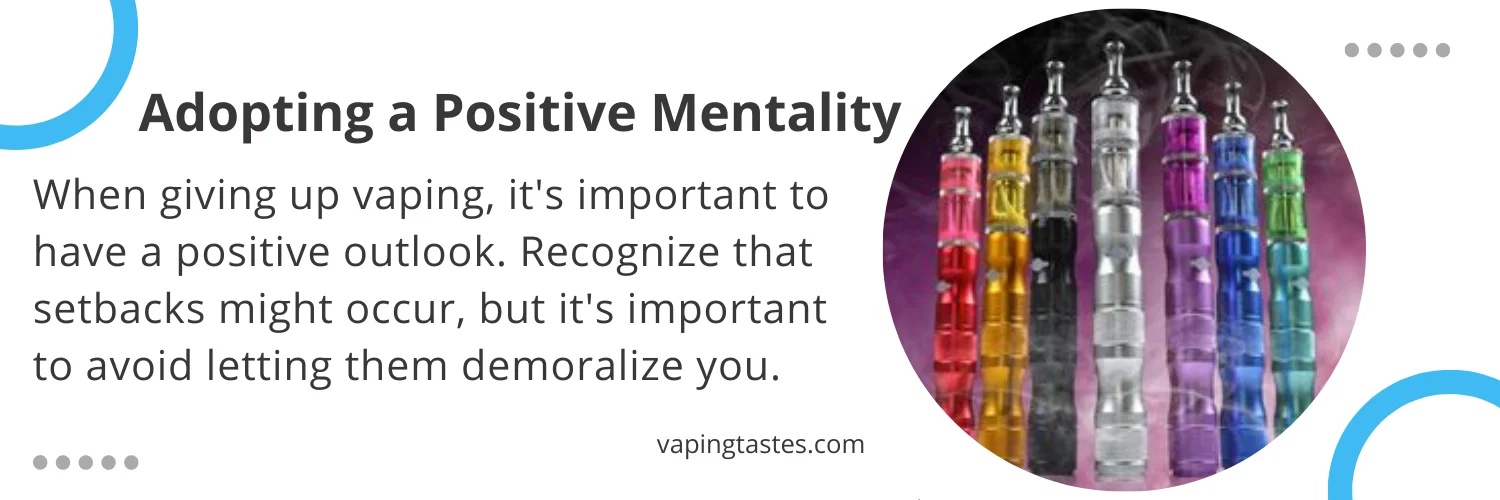How to Quit Vaping
A Comprehensive Guide
Introduction
Because both vaping and tobacco cigarettes contain extremely addictive nicotine, quitting vaping may be just as challenging.
To stop using JUUL or other e-cigarettes, you must have the desire to do so, make a strategy to stop, ask for assistance, and maybe even collaborate with a professional to choose a quit date.
The use of vaping as an alternative to conventional smoking has grown in popularity in recent years. However, consumers have expressed worry about the long-term health repercussions and addictive nature of vaping.
This complete guide is available to assist you if you want to stop vaping and take back control of your health. Although giving up vaping might be difficult, it is possible with the appropriate approaches and attitude.
According to the U.S. Centers for Disease Control and Prevention, an EVALI epidemic that started the previous summer has resulted in 2,807 hospitalizations and 68 fatalities in 29 states and the District of Columbia as of February 18, 2020.
As of September 2022, the CDC hasn’t provided any further recent data.
Although giving up vaping might be difficult, it is possible if you have the willpower and a game plan to help you achieve it.
There isn’t a lot of evidence on how many individuals attempt to stop smoking or how successful they are since vaping is a relatively new phenomenon.
According to the National Institute on Drug Abuse, over 50% of smokers attempt to stop each year, but only about 6% of smokers really succeed.
The amount of nicotine you can inhale in one puff and over the course of an entire smoking session are both limited by the burn rate of tobacco cigarettes.
But because of how their electronic designs work, JUUL and other e-cigarettes may deliver larger nicotine levels.
Vaping has been linked to a number of serious health issues, including seizures or other neurological issues as well as EVALI, a serious and sometimes deadly kind of lung damage.
“Given the addictive nature of nicotine, it can cause people to continue inhaling smoke or vapour into their lungs,” haematologist and oncologist Dr Joshua Mansour of the Los Angeles region told Drugwatch.
“That can develop into a whole other series of health events over time.
Reasons for Vaping
There are many different reasons why people begin vaping. Smokers may use it as an alternative to tobacco products, and youths who don’t smoke may start using it out of curiosity or under peer pressure.
Nicotine addiction drives people to continue vaping.
When you inhale nicotine, your brain’s reward pathways are activated by a rush of endorphins. The result is a “mini-high,” a momentary sense of bliss that lasts less time than with other medications but raises the levels of dopamine in your reward circuits just like other drugs do.
The action that earns the reward is reinforced via this procedure. People continue to vape in order to again feel the same way. When you stop vaping for a time, long-term usage might result in withdrawal symptoms.
Vaping cravings may result. Additionally, it may make quitting challenging but not impossible. (How to Quit Vaping)
Hon Lik, a Beijing-based pharmacist, created the first electronic cigarette in 2003, making the device a relatively recent occurrence. Like smoking a lot of cigarettes.
His father was a heavy smoker who passed away from lung cancer. In 2007, Lik’s first electronic cigarettes debuted in the U.S. and Europe.
1. Understanding the Risks of Vaping
Inhaling and exhaling aerosol created by e-cigarettes or other similar devices is known as vaping. Vaping still has a number of health hazards even if it is promoted as a safer alternative to smoking.
According to research, vaping may harm your lungs, and heart, and raise your chance of addiction. It’s essential to be aware of these hazards if you want to spur yourself on to stop.
2. Recognizing the Need to Quit
The first step toward a better way of life is admitting the need to stop vaping.
Consider your reasons for quitting, like your well-being, your financial situation, or the opportunity to set a good example for others.
Recognize the effects vaping has had on your life and picture a day when you will not engage in this behavior.
3. Setting a Quit Date
Setting a stop date helps you feel more committed and prepares your mind for the path ahead. Choose a date that allows you ample time to finish any last-minute planning.
To improve responsibility, highlight it on your calendar and let your support system know about it.
4. Building a Support Network
Your chances of successfully stopping vaping might be considerably increased if you surround yourself with encouraging people.
Share your choice with your friends, family, and coworkers, and kindly request their support. Online support groups and professional therapy are additional excellent resources for advice and inspiration.
5. Identifying Triggers and Creating a Plan
Spend some time figuring out what circumstances, feelings, or behaviours make you want to vape. Knowing what triggers you, whether it be stress, boredom, or social situations, enables you to create countermeasures.
Make a thorough strategy that specifies substitute actions or coping strategies for each trigger.
6. Finding Alternatives and Distractions
The process of quitting may be made easier by substituting healthy options for vaping and finding enjoyable diversions.
To shift your concentration, think about engaging in hobbies, exercise, or quality time with loved ones.
Products for nicotine replacement therapy (NRT), like patches or gum, may also aid in controlling cravings.
7. Coping with Nicotine Withdrawal
One of the most difficult things about quitting vaping is going through nicotine withdrawal. Expect to experience signs including irritation, headaches, and trouble focusing.
To lessen withdrawal symptoms, stay hydrated, get plenty of rest, and engage in deep breathing exercises. Remind yourself that these signs of momentary discomfort are really your body’s recovery. (How to Quit Vaping)
8. Dealing with Cravings
Although nicotine cravings might be strong, they usually pass quickly. Distract yourself from the urge by doing something else or talking to someone in your support system.
Exercises that include deep breathing and drinking water might also lessen the severity of cravings. Keep in mind that every urge you successfully ignore will help you get closer to your objective.
9. Managing Stress and Emotional Triggers
Relapses in vaping are often brought on by stress and emotional stressors. Learn stress-reduction techniques that are healthful, such as mindfulness, yoga, or meditation.
To deal with emotional triggers, consider strategies such as keeping a diary or speaking with a reliable friend. Long-term success depends on learning effective coping skills.
10. Staying Motivated and Focused
It’s crucial to stay motivated throughout the quitting process. Remind yourself often of the motivations for your decision to stop smoking and the advantages you stand to gain.
Celebrate incremental successes along the road, such as achieving a milestone or getting through a difficult scenario. Keep your eyes on your objectives and picture the healthy, vape-free life you want to achieve.
11. Celebrating Milestones and Rewarding Yourself
Celebrating achievements like quitting vaping may raise your confidence and promote good behaviour. Quitting vaping is a huge accomplishment.
Plan prizes for yourself at certain points along the way, such as going to the movies, getting a new book, or taking a spa day. Select incentives that fit your hobbies and make you feel fulfilled.
12. Overcoming Relapses and Setbacks
When trying to stop vaping, relapses and setbacks are frequent, but they don’t equal failure. Don’t be too harsh on yourself if you make a mistake.
Take what you can from the experience and use it to reevaluate your strategy and deepen your dedication. Use your network as support and put prevention measures into place to avoid relapses in the future. (How to Quit Vaping)
13. Seeking Professional Help
If you’re having trouble quitting vaping on your own, don’t be afraid to get assistance from a professional. Addiction professionals, counsellors, and healthcare experts may give specialized guidance and assistance.
To increase your chances of success, they may help you create a specific quitting strategy and provide extra tools.
14. Maintaining a Healthy Lifestyle
Giving up vaping is just the first step toward a healthy lifestyle. Adopt a healthy lifestyle to embrace a holistic approach. Eat a balanced diet, move around often, and put self-care first.
Make an atmosphere that supports your well-being supportive and surrounded by positive people.
15. Tenacity And Support
Vaping cessation is a path that calls for dedication, tenacity, and support. You may regain control over your health and escape the grip of vaping by being aware of the hazards, realizing the need to stop, and putting sensible methods into practice.
Keep in mind that every step you take toward quitting counts, and with enough willpower, you can succeed.
To compare and contrast the act of vaping and non-vaping, let’s examine a table that highlights their key differences:
| Aspect | Vaping | Non-Vaping |
|---|---|---|
| Definition | The act of inhaling and exhaling vapor produced by an e-cigarette or similar device. | Not engaging in the act of vaping or using any vaping devices. |
| Inhalation | Inhales aerosol (vapor) containing nicotine or other substances. | Does not inhale any aerosol or vapor. |
| Health Impact | Potential risks associated with inhaling chemicals and substances in the aerosol. | Not exposed to potential risks associated with vaping. |
| Secondhand Smoke | Emitting secondhand vapor that may contain harmful substances. | Not contributing to secondhand exposure to vapor. |
| Nicotine Dependence | Can lead to addiction due to the presence of nicotine in vape products. | Not dependent on nicotine or at risk of addiction. |
| Odor | Some vape flavors may leave a distinct scent in the surrounding area. | Does not emit any odor related to vaping. |
| Cost | The cost of purchasing vaping devices, e-liquids, and replacement parts. | No expenditure on vaping-related products or accessories. |
| Social Acceptance | Varying levels of acceptance in different social settings. | Generally accepted without any stigma. |
| Regulation | Subject to regulations and restrictions imposed by authorities. | No specific regulations or restrictions concerning non-vaping. |
| Smoking Cessation Aid | Used by some individuals as a tool to quit smoking. | Not applicable as a smoking cessation aid. |
Inhalation, health effects, secondhand smoke, nicotine dependency, odour, cost, social acceptability, regulation, and smoking cessation are only a few of the differences between vaping and non-vaping that are included in this table.
Don’t Vape Is Your Only Line of Defense Against Vaping-Related Lung Disease, Per the CDC
The particular factor in vaping that is triggering the mysterious ailment has not yet been identified by the Centers for Disease Control and Prevention.
The disease has also shown how little authorities and the medical profession may truly understand possible e-cigarette adverse effects.
In a briefing for state and federal public health leaders on Sept. 6, Dr. Dana Meaney-Delman, the CDC incident manager for the outbreak, said: “CDC has advised that individuals consider not using e-cigarettes while the investigation is ongoing because as of now, this is the primary means of preventing this type of severe lung disease.”
The FDA and CDC are unsure of the precise chemical that may be to blame, and there is a vast list of potential possibilities. (How to Quit Vaping)
“The samples we’re continuing to evaluate show a mix of results and no one substance or compound, including vitamin E acetate, has been identified in all of the samples tested,” said Mitch Zeller, director of the FDA’s Center for Tobacco Products, during the briefing on September 6. (How to Quit Vaping)
DID YOU KNOW?
Swallowing e-fluids used in any e-cig or vape pen can be fatal. If you swallow vaping fluids, you should immediately call Poison Control at 800-222-1222 for expert help.
Source: National Capital Poison Control Center
FAQs (Frequently Asked Questions)
- Can quitting vaping lead to weight gain? Because nicotine may decrease hunger, quitting vaping might sometimes result in a little weight gain. But you can control this by leading a healthy lifestyle and paying attention to your eating habits.
- How long does nicotine withdrawal last? The symptoms of nicotine withdrawal often peak in the first few days and then abate within a few weeks. Individual experiences, however, could differ.
- Is it possible to quit vaping cold turkey? Although quitting vaping immediately is conceivable, given that nicotine is an addictive drug, it could be more challenging. Making a plan for quitting and getting support are key.
- Are there any medications to help quit vaping? A number of drugs, including over-the-counter nicotine replacement therapy (NRT) treatments and prescription-only varenicline, may help someone stop vaping. For advice, speak with a healthcare practitioner.
- What are some long-term benefits of quitting vaping? Giving up vaping may improve lung function, lower the risk of respiratory problems, improve cardiovascular health, and lessen the chance of consequences from addiction.
- How can I cope with cravings during the quitting process? Although managing cravings might be difficult, there are a number of techniques you can try. Engage in a new activity to distract yourself, concentrate on your breathing techniques, sip water, or seek help from your network of people.
- What can I do to stay motivated throughout the quitting journey? When stopping vaping, it’s important to maintain motivation. Remind yourself of the motivations for your decision to give up, establish modest objectives, acknowledge accomplishments, and surround yourself with like-minded people who can inspire you and hold you accountable.
- Are there any alternative behaviours I can adopt instead of vaping? Yes, changing your behaviour may help you shift your attention away from vaping. Take part in enjoyable activities like reading, jogging, listening to music, or developing mindfulness. The process of quitting may be facilitated by finding constructive diversions.
- What should I do if I relapse and start vaping again? Relapses may occur, so it’s vital to be kind to yourself when they do. Consider it a learning opportunity and note the circumstances or triggers that contributed to the relapse. If necessary, revise your quitting strategy and get the assistance of your network or specialists.
- Is it necessary to seek professional help to quit vaping? While it is possible to stop vaping on your own, getting expert assistance may significantly improve your success rate. Your particular requirements may be met by individualized advice, assistance, and resources from healthcare professionals, counsellors, or addiction experts.
- When did you most recently vape? You could find it challenging to recall your most recent vaping session. Try your best to provide your lawyer with an approximate date for when you started using e-cigarettes regularly and when you quit. Your lawyer may better prepare your case if they are aware of your e-cigarette usage and the date that you were diagnosed with any associated injuries.
- What kind of e-cigarette did you use? E-cigarette lawsuits have cited a number of defendants, including British American Tobacco, Juul Labs, Altria-Phillip Morris, and Imperial Brands. If your vaping injuries have made any aspects of your everyday life worse for you than they were before, your Juul lawyer will want to know.
- How often did you use a vape? Your attorney will need to know how often you used your e-cigarette and how many vape pods you regularly used in order to evaluate your case. Try your best to give him or her an estimate if you can’t recall.
- Are copies of your medical records available? When discussing with their lawyer about compensation for e-cigarette adverse effects, clients should have copies of their medical documents available. They may use these data to validate details like your diagnosis date.
- How have the injuries you sustained from vaping affected your everyday life? If your vaping injuries have made any aspects of your everyday life worse for you than they were before, your lawyer will want to know. Be prepared to talk about the psychological and emotional toll that these injuries have had on your life.
- Have you attempted to give up vaping? It may be challenging to stop vaping if you have a nicotine addiction, one of the worst negative effects of using e-cigarettes, but it is achievable if you want to stop and establish a strategy to do so. If you’ve tried to stop vaping, your lawyer will want to hear about it.
Reviewing Your Development
Take time to evaluate your success as you go through the quitting process. Whether you have quit smoking for a day, a week, or a month, remember to celebrate your victories. Applaud the fortitude and tenacity you’ve shown in overcoming obstacles and resisting the impulse to smoke. Your perseverance is shown by each step you take.
Adopting a Positive Mentality
When giving up vaping, it’s important to have a positive outlook. Recognize that setbacks might occur, but it’s important to avoid letting them demoralize you. Consider relapses as opportunities to learn and develop your recovery.
Keep your attention on your ultimate objective of leading a vape-free life, and remind yourself of the factors that motivated you to start this path in the first place. (How to Quit Vaping)
Utilizing Support Systems
Your chances of successfully stopping vaping might be considerably increased by having a solid support network. Inform your loved ones—friends, relatives, and family—of your desire to stop by getting in touch with them. Ask for their support, sympathy, and aid as required.
A feeling of community and shared experiences may also be provided by joining online communities or support groups. (How to Quit Vaping)
Creating Coping Mechanisms
Develop powerful coping mechanisms to deal with your triggers by being aware of them. Having a strategy in place may help you get through these trying times, whether they are brought on by stress, social settings, or certain emotions.
Distract yourself from the need to vape by doing something else, like working out, pursuing a hobby, or relaxing. Find fulfilling, healthy substitutes for vaping that make you happy. (How to Quit Vaping)
Choosing a Healthier Way of Life
Giving up vaping gives you the chance to adopt a better lifestyle overall. Take care of your physical and mental health. Include regular exercise in your routine, consume a balanced diet, get enough sleep, and place a high priority on taking care of yourself.
Spend time with supportive people and take part in activities that advance your general well-being.
A MAJOR LAWSUIT AGREEMENT BETWEEN BIG TOBACCO
Fatal Lung Disease Linked to Vaping Underscores Hidden Risks of E-Cigs
At least 450 individuals from 33 states have contracted a lung disease linked to vaping, and at least six of them have passed away as a result of the ailment. While attempting to identify the source, health experts are advising individuals to stop vaping until they do.
Within 90 days of vaping, the illness mostly impacted youthful e-cigarette users.
According to the definition, it is a serious case of pneumonia brought on by lipids, or fats, in the lungs. However, it’s unclear to researchers if the lipids represent a major indicator of the condition’s root cause.
In order to maintain patients breathing throughout treatment, mechanical ventilators are often used. (How to Quit Vaping)
Patients’ ages on EVALI in February 2020
———————————–
| Under 18 | 15%|
———————————–
| 18 to 24 | 37% |
———————————–
| 25 to 34 | 24% |
———————————–
|35 and Older | 24% |
———————————–
Source: Centers for Disease Control and Prevention
———————————-
Conclusion
Keep in mind that every person has a different experience when it comes to stopping vaping. Keep your resolve, be persistent, and ask for help when you need it.
You may give up vaping and adopt a healthy way of life.
Giving up vaping is a big step toward becoming healthier and taking back control of your life. It is a path that calls for perseverance, dedication, and support.
As you get to the end of this extensive book, it’s critical to review the main ideas and provide you with one last set of inspiration and direction.
Research Articles
- Associated Press. (2019, September 10). Wisconsin Man Accused in Illegal THC Vaping Cartridge Scheme. Retrieved from https://apnews.com/article/50175c10378f408cb8912c4069034077
- Azad, A. (2019, August 7). FDA Investigating 127 Reports of Seizures, Neurological Symptoms Related to Vaping. CNN. Retrieved from https://www.cnn.com/2019/08/07/health/ecigarette-seizure-fda-investigation/index.html
- Boyles, S. (2019, September 6). Vape Illness Update: 3 Deaths, 450 Cases, Countless Questions. MedPage Today. Retrieved from https://www.medpagetoday.com/pulmonology/smoking/82019?xid=NL_breakingnewsalert_2019-09-06&eun=g1270753d0r&utm_term=NL_Daily_Breaking_News_Active
- Branswell, H. (2019, September 6). Pneumonia Cases Linked to Vaping Are Still Rising. And Federal Officials Don’t Know What’s Causing Them. STAT. Retrieved from https://www.statnews.com/2019/09/06/vaping-cases-rising-dont-know-cause/
- Centres for Disease Control and Prevention. (2019, September 6). Transcript of September 6, 2019, Telebriefing: Investigation of Pulmonary Disease Among People Who Use E-Cigarettes. Retrieved from https://www.cdc.gov/media/releases/2019/t0906_telebriefing_investigation_pulmonary_disease_e-cigarettes.html
- Centres for Disease Control and Prevention. (2019, September 6). Initial State Findings Point to Clinical Similarities in Illnesses Among People Who Use E-Cigarettes. Retrieved from https://www.cdc.gov/media/releases/2019/p0906-vaping-related-illness.html
Δ Please consult a medical expert before making any choices on your health.







4 Comments
Wow Thanks for this write-up i find it hard to search for great information and facts out there when it comes to this subject material appreciate for the guide site
Pingback: Loon Vape -
It sounds like you’re describing the dedication to innovation and customer satisfaction that Loon Vape embodies. Here’s a structured breakdown of the key points from your passage:
1. **Dedication to Innovation**: Highlight how Loon Vape prioritizes innovation as a core value. This commitment drives their success in the vaping industry.
2. **Product Variety**: Emphasize the wide range of products that Loon Vape offers. From powerful mods to sleek pod systems, they cater to diverse preferences and needs among vapers.
3. **Attention to Detail**: Discuss how Loon Vape stands out by paying meticulous attention to every aspect of their products. This includes the quality of e-liquids and the ergonomic design of devices.
4. **Enhanced Vaping Experience**: Summarize how these factors combine to deliver an exceptional vaping experience for customers.
With these points, you can effectively communicate Loon Vape’s commitment to innovation and excellence in the vaping industry.
s3bc94